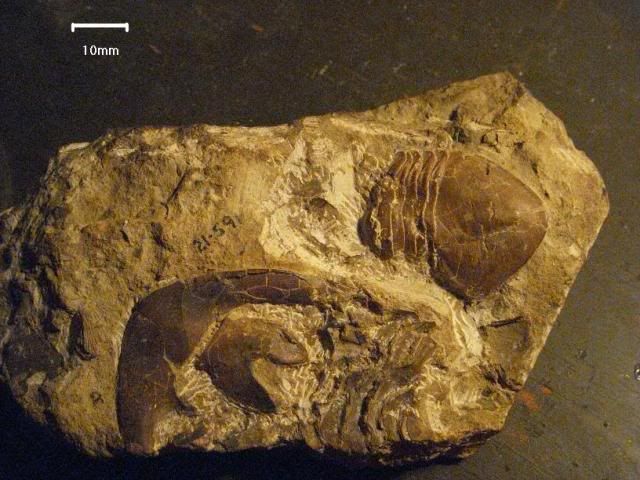I am often asked by professors how a certain class went. Well, to really understand how a grad student may think about a class, you need inside insight at our brains and behavior. These things come out very well on class field trips, one of which I’m sharing here to give insight to a group of geology students’ brains. While taking a paleoecology class to help further my understanding of how one can do a paleoenvironmental reconstruction on an archaeology site. The professor teaching it is a palaeontologist, so the class has focused a great deal on using fossils to help complete the story I can see within the soil. To this end, we went on a field trip to get hands on experience interpreting an outcrop using fossil clues to help us.
When approaching a site, we look at it from a distance and write down everything we see. We drew quick sketches of the outcrop from a distance to get an overview of what we were seeing. Do the bed layers pinch out? Are some features really big, like a huge boulder in the middle somewhere? Mine was complete with arrows for trees, something akin to a swirl for a bush and stick figures for my classmates.

Next we would get up close, but not too close, and sketch the bedding of the outcrop. What type of rocks are there? What colors are they? What is the bedding and cross-bedding? What fossils do you see? That last question always tripped me up since my fossil identification skills are nearly nil. I can get a trilobite and brachiopod, but a tentaculite? Not a chance on that one until I found it and could differentiate it from a crinoid.
The next step was to get super close and take a look at even finer detail. The orientation of the fossils, the grain sizes in the rock, bioturbation features, and anything else we missed from the previous step. You’d never would have known until this point how utterly fascinating the roadside of a sleepy little town could be, but a truck load of geologists would jump out at every outcrop the professor stopped at, race each other to the outcrop face, and immediately start hammering away and characterising in what we began to call âspeed characterizationâ so we could get on with our own goal: collecting fossils for ourselves.
Feature image: Flicker: heleninwales